10 Pharmaceutical Marketing Tactics From Our New Workbook
A preview of Orientation Marketing’s pharmaceutical marketing tactics workbook.
There is a range of marketing tactics that pharmaceutical marketers can adopt as part of their marketing plans to reach patients, physicians and laboratory specialists.
Many marketing tactics for this audience will be inappropriate. Others will be highly suitable.
In this post, we’ll handpick ten pharmaceutical marketing tactics which have served us well over the years, as well as a few others worthy of more attention by life science and pharmaceutical marketers.
The ten tactics are taken from Orientation Marketing’s most recently published e-book, entitled “Pharmaceutical Marketing: Tactics & Techniques” that feature 25 tactics chapters with various options for pharmaceutical marketer’s in each chapter.
You can access the e-book for free below right away, or browse snippets from the e-book in this preview.
Pharmaceutical Marketing: Tactics
25 of the essential agency tactics and techniques specifically for the pharmaceutical marketer operating in the life science industries.
10 PHARMACEUTICAL MARKETING TACTICS
In this post, we’ll summarise ten pharmaceutical marketing tactics from our new e-book. Please feel free to access the other 15 by downloading the full e-book (for free) from this page.
TACTIC #1 - DIGITAL ADVERTISING
Digital display and other methods of direct digital marketing have existed since the birth of the internet. Such methods of marketing have, in recent times, been discounted as an effective digital marketing tactic. But make no mistake, they still very much deserve their place within the pharmaceutical marketer’s marketing plan. We recommend advertising as such via third-party media vendors in the pharmaceutical industry as they possess a trusted audience. Know your audience and know the publisher and website where the banner will sit. Being strategic about the placement will mean you will get more clicks, with those clicks being of a higher value. Before taking out a banner adverts on a publisher’s website, understand the placement of the advert and find out about other ads running on those pages and spend time understanding the type of visitor that is likely to be visiting.
TACTIC #2 - VIDEO MARKETING
Video marketing can capture a wide audience and it works on many levels to engage with audiences in an entertaining and time-efficient manner. They can be used to promote and market product or services, increase engagement on digital channels, educate consumers and customers and reach new and existing audiences. This type of content option has emerged as hugely popular in the last few years but creating videos - from explainer videos to talking-head interviews to presentations to behind the scenes at events - are time-consuming and often costly. This said, videos can be highly efficient to explain complex pharmaceutical products and manufacturing processes and can be used for specific campaigns and events that might be prioritised within the organisation. Pharmaceutical organisations can use video content to great effect. They can create animations to simply explain how their products and technologies work, making them even more accessible than text can alone.
TACTIC #3 - SEARCH ENGINE OPTIMISATION
Search engine optimisation (SEO) is the process of optimising websites and its content to bring more opportunities to the website via Google and other search engines. The associated benefits include generating more traffic, converting more visitors by attracting more relevant traffic, boosting awareness of the brand, service expertise and products and well as drive sales offline and online. But the benefits occur only if web pages appear on the first page of Google’s search results. Reaching these positions, however, is not often considered a priority for pharmaceutical and life science marketers. But pharmaceutical marketing professionals are quickly realising that a whole world of opportunity exists away from traditional methods, with SEO (and a wider content marketing strategy) being one of the key avenues in this sector.
TACTIC #4 - WEBINARS
Webinars have been the linchpin for our clients' content marketing efforts for a number of years. But what once used to be a cash cow product in our vendors' media planner has now become something of a commodity. Certainly, as the rate for a webinar has been driven down by competition, which in some instances, has affected both the quality and quantity of leads/registrations/attendees for webinars. As part of a sustained, strategic lead nurture campaign they can still provide a great opportunity to generate leads and also provide a rare opportunity to engage with your prospects rather than just talk at them. And you can run these yourselves or work with vendors to create them for you. Other important factors to consider when planning your webinar is how long the webinar will last (we recommend no longer than an hour, including introduction and Q&A) and also the time of the live webinar. Also, make sure an on-demand version is available in your content library.
TACTIC #5 - LIVE PANELS AND INTERVIEWS
Panels, Q&As and original interviews, and any sort of one-to-one content is highly engaging, where the publisher (or a representative from the publication) asks a series of questions to an individual or group of industry influencers/experts in an interactive format. It involves both parties and the finished article is usually one that is shared via a number of contributors. Interviews and Q&As come in a range of forms but the premise is usually the same where a member of the organisation, commonly a subject matter expert or a new hire, is interviewed with the questions/answers published to the wider audience. Should you be looking to present your pharmaceutical organisation in a different light, and position your employees in the process, consider conducting interviews and Q&As with your employees. You have many options in their format. In B2B pharmaceutical markets, it is often the subject matter experts or representatives of the organisations that own the relationships with target audiences. Live panels and interviews are great ways of promoting these individuals, and therefore, your products and services.
TACTIC #6 - INFLUENCER MARKETING
In the pharmaceutical sector, people care about experiences and this is how people decide if they are going to do business with an organisation. In many B2C sectors, organisations use influencers to promote their products and offer discounts because audiences trust these celebrities. Pharmaceutical organisations can do the same by using trusted and well-known industry influences to help promote their products: A growing trend across the entire marketing landscape. Organisations and brands can use influencers to share their stories. They might not even need to be famous in that respect. In big pharma, for example, following the story of someone who is using medication for diabetes, while they share positive stories about their experiences. Word of mouth is also quite prevalent in the pharmaceutical sectors, where people’s opinions get others interested. So, getting influencers to share positive experiences they have had with your drugs or your services or your content will increase the trust people have in your brand.
TACTIC #7 - ABM
ABM, commonly referred to as relationship marketing and key account marketing, is a strategic approach to identifying, marketing to and building relationships with a target prospect or organisation. It flips the common marketing and sales approach from attracting prospects and qualifying the most suited, to actively targeting the most suited prospects from the outset. Using common sales approaches for perusing target customers, via non-sales methods. An account-based marketing strategy will treat a target organisation as a market, with the stakeholders (staff) within that organisation as its potential clients, whom marketers will seek to befriend. It is present and highly relevant for B2B pharmaceutical, life sciences and technology marketers, business development and commercial professionals at enterprise level where often the only differentiator between suppliers are relationships. ABM brings with it a number of complexities simply because it is a process that can take time to see results, involving a number of people and channels. But the benefits far outweigh these concerns, such as the ability to build relationships with target audiences before they enter a sales cycle, improving the probability of a sale with highly targeted content.
TACTIC #8 - ARTIFICIAL INTELLIGENCE
Get your thinking caps on for this chapter… In computer science, artificial intelligence (AI), sometimes called machine intelligence, is intelligence demonstrated by machines, in contrast to the natural intelligence displayed by humans and animals. Leading AI textbooks and online courses on AI define the field as the study of intelligent agents: any device that perceives its environment and takes actions that maximize its chance of successfully achieving its goals. Artificial intelligence can be applied to almost every part of the pharmaceutical industry and your colleagues in other departments will already be using it as part of the drug development process. Can machines help you refine your marketing decisions and tactics?
TACTIC #9 - PR
Pharmaceutical public relations fulfils a much more important role than just creating promotional adverts. Public relations (PR) is the practice of deliberately managing the spread of information between an individual or an organisation and the public. It has the ability to deliver fairly balanced and objective information to enhance scientific exchange and can be cost-effectively utilised throughout a product's lifecycle, even for mature brands and those going off patent. Every pharmaceutical organisation should be adopting PR activities to promote themselves, as well as their services. Often, PR activities form around company news and events, but they can also form around other initiatives. Be creative with your news, culture, community involvement and industry events, and also be creative with your distribution. A story isn’t a story if it isn’t seen by a wide enough audience.
TACTIC #10 - BLOGGING
Blogging for business: Potentially your most valuable tactic. When a potential customer fires up Google and types in their question - they (could) find your blog. It could be today, tomorrow or in a year’s time, but you need to be there at the top of the search engines for this to happen. Blog posts, articles and press releases are content entries found on website blogs, whether they are on your website or partner/vendor websites as guest contributions. This content option is usually the simplest and quickest to create - although it is certainly the case that despite this, pharmaceutical blog articles that include research, as well as the opinions of subject matter experts in organisations, can take time depending on internal processes of approval. This said, should content be your desired route to market, utilise blogs and articles on yours and others’ websites. Orientation Marketing’s primary marketing tactic is blogging, and we are experiencing a rapid growth in website conversions directly because of it. We are also running similar blogging and content campaigns for our clients and the results are the same. You are fully aware of blogging as a tactic, all you need to do is put a blog strategy in place to create and distribute content on a regular basis.
DOWNLOAD THE REST OF THE TACTICS…
Can you adopt more of these pharmaceutical marketing tactics? Great, we have more waiting for you in our free tactics workbook for pharmaceutical marketers which you can download here.



